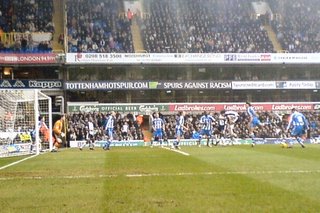From the "Bahrain Tribune"
The expression "home advantage" is one commonly used to describe the benefit that a team or individual sportsman has in playing on home territory; it was never more visible than in Edinburgh last Saturday. Scottish Rugby's stadium has been dubbed "Fortress Murrayfield" in the past to signal just how hard it has been for visiting teams to win there. The fortress's defences have been breached rather often in recent times with Scotland's international team going through a long bad patch. But no more. With successive wins against France and England (the most fancied sides in the 6 Nations championship) the fortress has been rebuilt and Scottish rugby fans can sing again about sending the opposition "homeward tae think again". These words from "Flower of Scotland" refer to one of the Scots proudest days when King Robert the Bruce defeated the English Army under Edward II at Bannockburn in 1314. It was Edward who was the first invader to be sent home to think again!
The English rugby team has suffered the fate of Edward fairly frequently over the years but since 1990 (Scotland's "Grand Slam" year) wins against the Auld enemy have been harder to come by. Before Saturday Scotland had only used their home advantage to get a win once over these years - on a very rainy day in 2000 when they handled the wet ball better than the English (who, of course, complained that the conditions were against them!). There were no such complaints last Saturday for although it was very cold indeed (I was not the only spectator shivering in his seat) it was dry and clear; ideal, you would think, for the handling game. Strange then that this was a match without tries - a rarity in the modern game. Both defences were excellent but the Scots were truly heroic as they repelled proud Corry's army over and over again. Despite the lack of tries it was one of the best rugby matches I have ever seen, and the Scots deserved their win.
A passionate and noisy crowd fired the Scottish players up and this support undoubtedly contributed to their success. As usual a few ill-mannered Scots nationalists stayed seated through the National Anthem (see photo) but whether this, or the pre match show put on by the Scottish Rugby Union (SRU) also helped their team I am not so sure. With kilts swirling and pipes playing we were treated to all the usual razzmatazz of Scottish national fervour. The SRU really pulled out the stops this time because we also had a "tribal Scottish perfomance" in the pre match build up with echoes of Bannockburn and Robert the Bruce (no doubt Rob Roy, Robbie Burns and Flora Macdonald as well). There were also flame-throwers, strobe lighting displays and even the firing of an artillery field gun. The Scottish flag was paraded (but not the English) and the Scottish team was announced man by man to cheers (but you had to look at your programme to find the names of the English players). I have never been to such a one-sided pre match build up at any sporting event and whilst the England team won't have been surprised at the discourtesy shown to them, the Scottish team may have been a tad embarrassed.
Home advantage is perhaps the best evidence that much of sport is played in the head rather than with the hands and the feet. You take two teams of equal technical ability and skill but the one playing at home has a clear advantage. For example in the English football "Premiership" this year to date teams have won 50% of their home games but only 30% of away matches - indicating the extent of the benefit of playing on a familiar pitch in front of a friendly crowd. In cricket that advantage is also that pitches can be prepared to suit the home side and this goes on around the cricketing world (however groundsmen and curators may deny that they work to such instructions). It is a valuable part of sport that to "win away" is often the highest achievement that any side can aspire to. This was beyond England at Murrayfield this time around and it may be beyond them next week in Paris as well. All but one of the nine matches played in the 6 Nations so far this year has been a "home win" and it is quite possible that all the remaining fixtures will follow this pattern. In international rugby it does seem that there's "no place like home".







